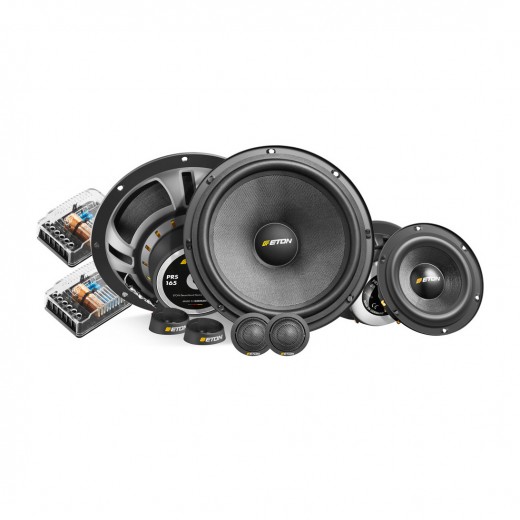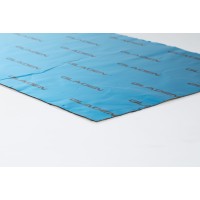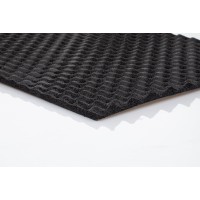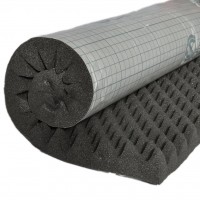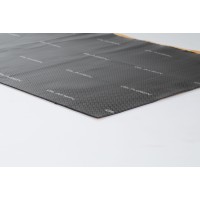Speakers Eton PRS 165.3
More about the product
- Use our consulting room
- You can return the goods to us within 14 days
- Try the product at our store
Eton PRS 165.3 component speakers
The Eton PRS 165.3 is a semi-active 3-band component system that is one of the best in its class! A reinforced membrane made of glass fiber and paper ensures dynamic and powerful sound reproduction. An open-sounding center speaker with rich detail – these are just a few of the attributes of the PRS 165.3 component system. The reinforced metal basket ensures optimal stability and offers good air flow for the ferrite magnet. A bass filter is required at the signal source or amplifier to connect a woofer.
The 19mm tweeters have silky and smooth tones that feel unobtrusive. The reproduced sound is soft, full of details and has clear treble tones. Their excellent features add the necessary oomph that you expect from speakers in this category.
The PRS 165.3 package includes a high-quality crossover, which is equipped with sophisticatedly designed air coils and premium foil capacitors. A two-stage center filter of 6 dB / 12 dB is also possible here.
The 80 mm center speakers score with a hand-coated paper membrane and a reinforced metal basket that ensures high stability. They are powered by a powerful ferrite magnet with optimized magnetic field symmetry. The well-ventilated basket and voice coil carrier ensure sufficient cooling even at high volumes. This guarantees detailed midrange tones with high efficiency.
| Catalog number | PRS 165.3 |
| Brand | Eton |
| Links | Official web presentation |
| Speaker typeCoaxial speakers: Coaxial speakers are characterized by a so-called all-in-one design. The tweeter and mid-bass speaker are in one basket. The advantage is simpler assembly, but thanks to the connection or proximity of the bands in one speaker, the sound quality will usually be reduced. As a rule, in the middle of the mid-bass speaker, there is a tweeter whose voice coil works in the second air gap of the common magnetic circuit. The three-way coaxial speaker consists of a mid-bass speaker, a center speaker and a separate tweeter in the front on a special beam. Component Speakers: Component speakers are characterized by a division into individual frequency bands, treble + mid-bass + or. bass band. The individual speakers can be placed completely separately, which results in a better sound and acoustic performance. In the vast majority of cases of component speakers, an external crossover is also supplied, which divides the treble, middle / mid-bass, and into the three-band the bass band or allows setting the decibel level of the tweeter (e.g. +2 dB, 0 dB, -2 dB), steepness (e.g. 6dB/Oct. 12dB/Oct.) or active or bi-amp connection. | Komponentní 3pásmové |
| RMS powerRMS speaker power is the constant power of the entire system, not just one speaker or one side. This is also the performance of continuous use of the speakers. If the RMS power is exceeded for a long time, the speakers may be irreversibly damaged! | 70 W |
| Max. (maximum performancePeak performance , which the speaker can play for a moment (approx. 0.5 s), for example when hitting drums in a song. If the max power is exceeded, the speakers will usually be damaged! | 100 W |
| Sensitivity (SPL 2.83V/1m)Sensitivity, sensitivity or efficiency of the speaker. Speaker sensitivity is given in decibels (dB) and simply put, the higher the value, the lower the demands on the amplifier's power. This is a defacto rating of how a speaker converts watts to sound. Sensitivity ratings are in noise level measured at 1 meter from the speaker using 1 W (watt of power) or using 2.83 volts at the source at 1 meter. A higher decibel level means the speaker is louder with less power. For every 3 dB increase in sensitivity, the speaker requires half the power to reproduce the same volume. For example, if an 88 dB speaker needs 100 Watts to produce a certain volume, then a speaker with a sensitivity of 91 dB needs only 50 Watts to reach the same volume. | 90 dB |
| ImpedanceImpedance - measurement of electrical resistance. When buying speakers, it is important to make sure that the impedance matches the amplifier or car stereo you are using. Example: A 2 Ohm speaker cannot be connected to an amplifier that is only stable up to 4 Ohms! A 4 Ohm speaker can easily be used with an amplifier that is stable up to 2 Ohms. The most common speaker impedance today is 3 - 4 Ohm. | 4 Ω |
| The diameter of the mid-bass speakerWe state the diameter of the speaker as the diameter of the entire speaker, not including the mounts, when smaller speakers (87, 100, 130 mm) have extra mounts. Some speakers are oval and there the dimension is given in inches, always the shortest side to the longest side. One inch is approx. 2.5 cm. | 165 mm |
| Installation depth of the mid-bass speakerThe installation depth of the speaker is measured from the bottom edge of the magnet to the bottom edge of the tin, plastic or cast speaker basket, or speaker bearing surfaces. | 66,4 mm |
| Mid-woofer diaphragm materialThe material that was used for the speaker diaphragm. Don't be afraid of the paper, it surprisingly has a very natural and high-quality sound and, thanks to the surface treatment, it can withstand moisture without any problems. | Skelné vlákno a papír |
| Center speaker diameterThe diameter of the center speaker is given as the diameter of a round speaker, not including the mount, where the mounts protrude even more on smaller speakers. | 80 mm |
| Mounting depth of the center speakerThe mounting depth of the center speaker is measured from the bottom edge of the magnet to the bottom edge of the tin, plastic or cast speaker basket. | 33,9 mm |
| Center speaker diaphragm materialDiaphragm material that was used in the manufacture of the center speakers. | Papír |
| Tweeter dome diameterThe net diameter of the dome (diaphragm) of the tweeter. | 19 mm |
| Tweeter dome materialThe shell material that was used in the manufacture of the tweeter. | Hedvábí |
| Frequency crossover included in the packageThe crossover is an important part of defacto all loudspeakers. A crossover usually contains different resistor values, coil sizes, and capacitor types that fundamentally modify the sound. We describe below what the turnouts are for. Component Speakers: A crossover is part of every quality component speaker system. Its task is to ensure the distribution of frequencies that the amplifier produces in the entire acoustic spectrum of frequencies so that each of the speakers receives only that part of the band that it can optimally play in terms of efficiency and minimal distortion. Coaxial speakers: In most cases, coaxial loudspeakers have a simple crossover (6dB/Oct.) formed by a capacitor at the tweeter. | Ano |
| Options for setting the frequency crossoverThe unwritten rule is that the more expensive the speakers, the more options the crossover has for adjusting the sound. The most common way to adjust the crossover is attenuation on the tweeter. More advanced crossovers also offer the option of setting the steepness on the mid-bass and tweeter or adjusting the frequency range. | Ano |
| Cover grids included in the packageOriginal cover grilles in speaker packaging. | Ne |
| Price forIf the price is for a pair, the package always includes 2 pieces of everything, e.g. 2x mid-bass, 2x tweeter and 2x crossover. | Pár |

